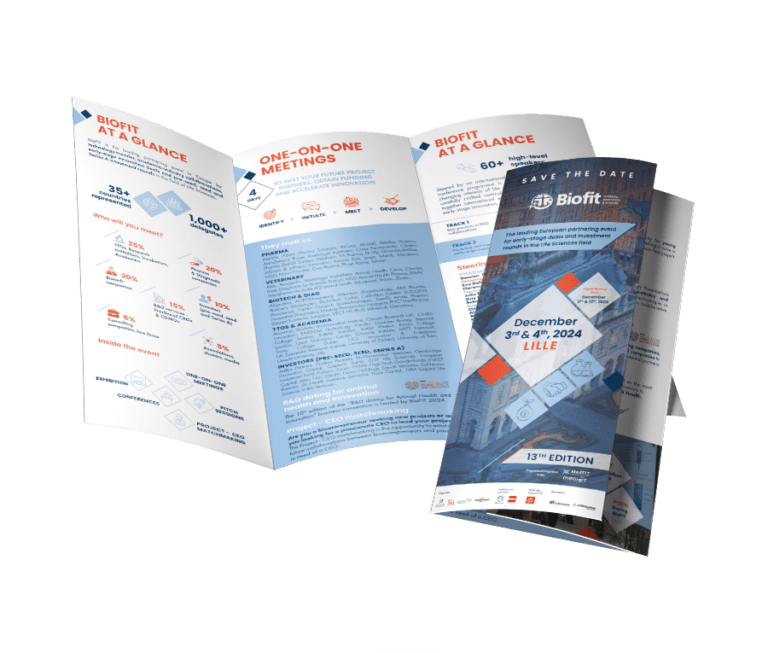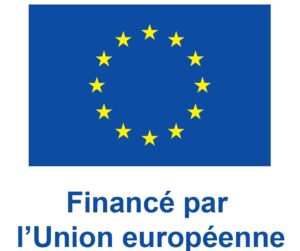This month, BioFIT speaker in 2015 Kevin McBride, Vice-President Research at AmorChem in Canada, shared his thoughts on European entrepreneurship in Life Sciences:
We have seen many new initiatives in early stage innovation financing over the past few years. How do you think these trends will evolve in the next ten years?
We will continue to see big pharma reaching back into stellar academic institutions and establishing collaborations both institutionally as well as with top tier researchers. Successes in such endeavours will continue to encourage pharma to seek out discovery-stage targets and assets externally, allowing them to essentially outsource their R&D and in-license only when a valuation point has been reached for candidates that fit into their pipelines. The reason why this activity represents the direction of early stage financing is that it is market-driven. Previously, early stage work was somewhat buried in universities with tech transfer offices utilising a “push” strategy, with only limited success. The closing-in on university-based research assets by both big pharma as well as by translational VC funds such as AmorChem represents more the need for greater innovation in the market. A “pull” strategy by that market is one of the best ways of encouraging and driving innovation forward.
Although the trend of pharma collaborating with academic institutions has been thriving over the last few years, at least here in Canada, the AmorChem Fund is quite unique in that we finance early stage projects in universities and were doing so ahead of the current trend. One interesting aspect of the currently evolving situation is that we occasionally find ourselves competing with substantially larger organisations for the same assets. But again, this is the market driving an increased need for innovation, and for those involved in discovery R&D in universities, such attention and competition can only be a good thing.
Johnson&Johnson are making quite a splash with their JLABS concept, whereby chosen projects are offered incubator space in chic new facilities amidst a key collective of intellectual and developmental expertise. I see that type of endeavour becoming more and more popular in the coming years.
As a North American VC, how do you see the future of the European seed capital market?
We invest more or less exclusively here in Canada, hence my limited knowledge of the European situation. I see it as similar from the Canadian situation, in that the geography/potential is very large, but we lag behind the United States in terms of financial infrastructure. There, they are willing to absorb the risk and transaction costs of financing early innovation, and with access to sufficiently diversified funding sources one can take an entity from SME level and scale it into a domestic if not globally competitive company. Europe has struggled in that fashion similarly to Canada, but there have been recent EU and European Commission initiatives, such as the Innovation Union/Single Market Act/Expert Group/CIP/COSME, as well as 2013’s “Regulation on European Venture Capital Funds”. I think that Europe is poised to become extremely competitive and productive in terms of entrepreneurs having access to venture capital across borders and achieving the growth that is essential for the sector.
How do you think we could further promote a culture of European entrepreneurial scientists?
Europe has lagged behind in terms of growing future entrepreneurs from the ivory tower of academia. While TTOs are doing their best, we struggle to drag hardcore traditional academics out of the laboratory into the brash, cold world of commercialization. In other words, while there may be tech transfer infrastructure available to them, they have not grown up with or been trained in how to commercialize, or even to think along such lines. It has to start at an earlier stage, and become part of the education of this generation and future generations’ trainee scientists. I saw a striking example of this when a colleague and I visited a local Canadian university that is heavily focused on innovation and entrepreneurship, and after we had given a short talk on our experiences in the VC world, I was amazed to hear the types of questions we were asked, and the business cards we were handed from various 21-year-old CEOs and VPs! These young scientists were clearly versed in the world of inventions, patents, licenses etc. and as part of their education, were all forming small virtual on-campus enterprises to polish their pitch and hone their craft. Although much of it was for educational purposes only, these young scientists are going to leave university with a very entrepreneurial frame of mind, and that can only be a good thing for the future.
While there may be some benefit in re-educating established older scientists in the ways of commercialisation, I think it has to start at the roots, and only when we rewrite the curriculum of what must be included in for example, a modern biochemistry degree, will we see the real and long-term benefits of a more aggressive approach to creating the next wave of scientific entrepreneurs.
From your point of view, which qualities does an entrepreneur need to have to succeed in the field of Life Sciences?
That’s really the million dollar question, isn’t it?! If there was a magic formula, we would be marketing it! Well, firstly, I think that passion would come pretty close to the top of my list. It’s so competitive out there, and it’s generally such a long road to achieving any real commercial success, that one simply has to be truly passionate about the candidate product(s) one is pushing. Passion can be infectious, and when it is combined with a truly great idea or concept, people usually listen.
Willing to fail, would also be pretty high on my list. Show me an entrepreneur who has never failed and I will show you one who has missed out on some extremely valuable lessons. Discipline is key. One has to have an unwavering determination to evolve and succeed, and be suitably disciplined to manage one’s time and not get distracted, and to always keep an eye on the goal, irrespective of the roadblocks. Creativity is essential in facing these obstacles and maneuvering around them. Undoubtedly, a solid work ethic is mandatory – be someone who is prepared to roll up your sleeves and dig in if you want to make it. I could go on and on, but in addition to great communication and people skills, I will end with one major factor for success. One has to have a clear willingness to listen and remain open-minded. Singlemindedness is one thing, but a stubborn resistance to listening to the opinions/advice of others, and not being flexible enough, can be the hallmarks of a failed entrepreneur.
In the end, a lot of it is common sense. If we learn as much as we should from our parents and our teachers (at all levels), then most of us should have the essential components for becoming an entrepreneur – you just have to add the science!
You attended BioFIT 2015 in Strasbourg, was it useful for you?
Very! Probably the most useful part for me, being European by birth, but working in North America, was the opportunity to touch base with various European-based big pharma teams, as well as interacting with VC entities that are active there, particularly those whose model closely mimics our own (early stage innovation financing) and with whom we have a lot in common. During an ongoing panel discussion, Nicolas Carboni (of SATT) and I realised how similar our models were, even in terms of the typical investment amount and deal structure, and this prompted further discussion and interaction thereafter. For this type of networking, BioFIT paid off handsomely.
But additionally, the one-to-one partnering session system was truly stimulating. I was able to sit down and discuss various portfolio assets we have with individuals I had not seen at the much larger BIO 2015 event in Philadelphia.
In many ways, I feel that BioFIT has all of the advantages of the BIO event itself, but being significantly more compact and more heavily focused, it was a much more relaxed and enjoyable experience overall. Perhaps it is the difference between European and American cultures and flavours (!), but I definitely came away from the meeting feeling recharged, rather than exhausted! I would definitely recommend it to anyone, not least our North American colleagues, who may, by the nature of their job location, be more geographically biased.
This year BioFIT is introducing two new activities (Business and Sciences slams featuring pitches in front of a jury of experts). Why do you think participants should attend or apply for these sessions?
AmorChem finds these slams extremely useful for deal sourcing in our own ecosystem. Such pitch presentations and science slams are becoming more and more the norm, and such activities will expand over the coming years. It will become more typical to see such events at even heavily academic conferences. We think that anyone who has a cool idea, or who wants to hone their pitch, or get key feedback from industry experts, simply must apply for these slams and learn from the experience (good or bad!) to come back stronger next time. There are few better ways to find out the weaknesses in one’s idea and/or pitch, than facing a jury and being handed down the verdict. We have been doing this for years now and it’s the way forward.
In your opinion, what three words best describe BioFIT?
Innovation. Networking. Partnership.
























